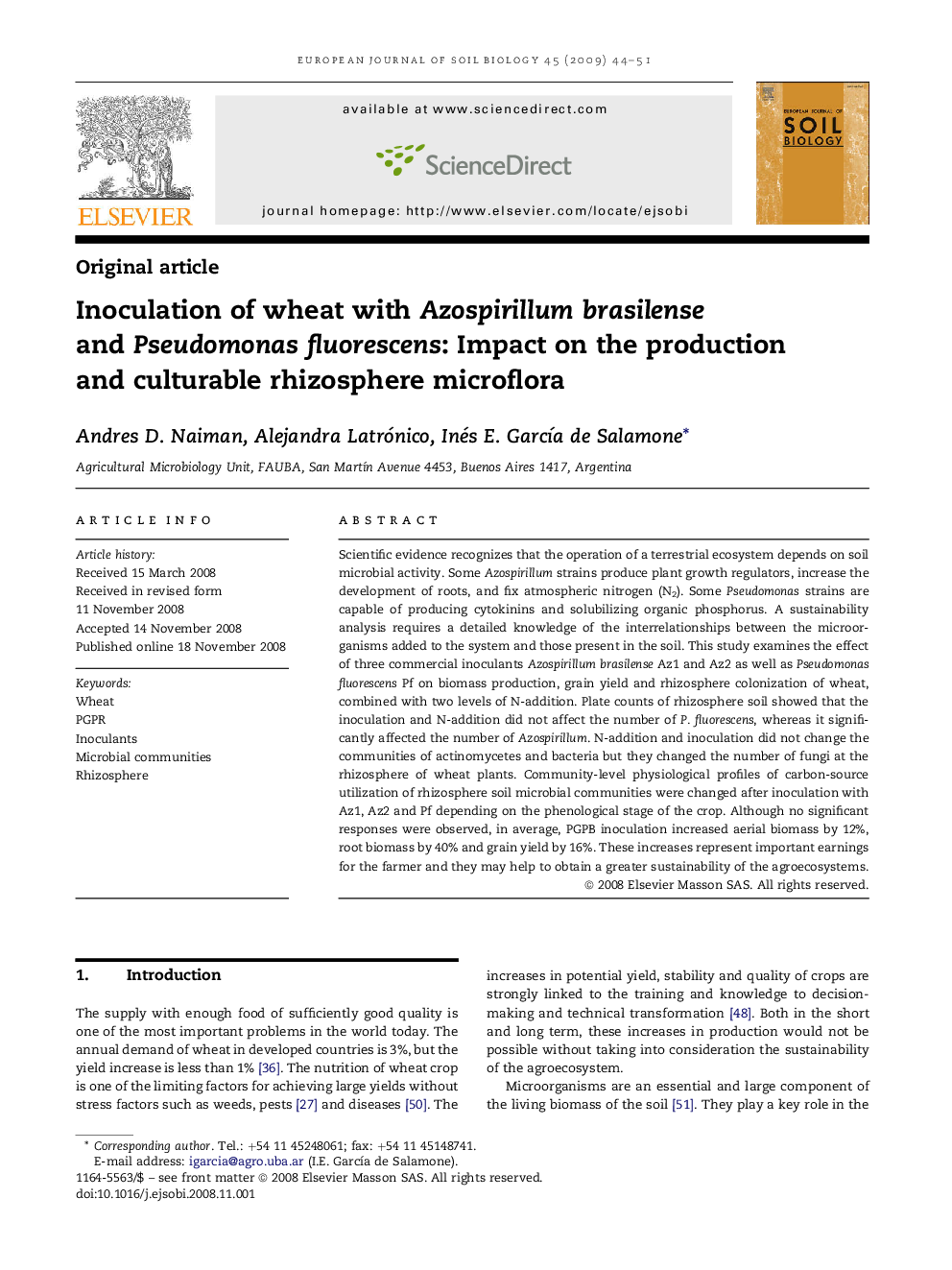| Article ID | Journal | Published Year | Pages | File Type |
|---|---|---|---|---|
| 4392294 | European Journal of Soil Biology | 2009 | 8 Pages |
Abstract
Scientific evidence recognizes that the operation of a terrestrial ecosystem depends on soil microbial activity. Some Azospirillum strains produce plant growth regulators, increase the development of roots, and fix atmospheric nitrogen (N2). Some Pseudomonas strains are capable of producing cytokinins and solubilizing organic phosphorus. A sustainability analysis requires a detailed knowledge of the interrelationships between the microorganisms added to the system and those present in the soil. This study examines the effect of three commercial inoculants Azospirillum brasilense Az1 and Az2 as well as Pseudomonas fluorescens Pf on biomass production, grain yield and rhizosphere colonization of wheat, combined with two levels of N-addition. Plate counts of rhizosphere soil showed that the inoculation and N-addition did not affect the number of P. fluorescens, whereas it significantly affected the number of Azospirillum. N-addition and inoculation did not change the communities of actinomycetes and bacteria but they changed the number of fungi at the rhizosphere of wheat plants. Community-level physiological profiles of carbon-source utilization of rhizosphere soil microbial communities were changed after inoculation with Az1, Az2 and Pf depending on the phenological stage of the crop. Although no significant responses were observed, in average, PGPB inoculation increased aerial biomass by 12%, root biomass by 40% and grain yield by 16%. These increases represent important earnings for the farmer and they may help to obtain a greater sustainability of the agroecosystems.
Related Topics
Life Sciences
Agricultural and Biological Sciences
Soil Science
Authors
Andres D. Naiman, Alejandra Latrónico, Inés E. GarcÃa de Salamone,
